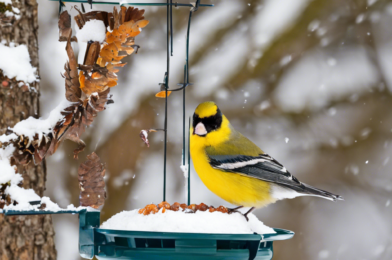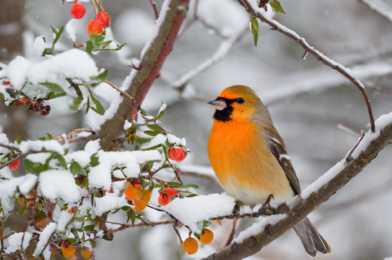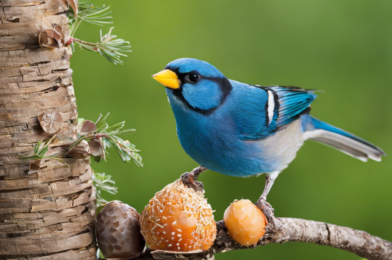Welcome the season of snowflakes and snuggles by bringing life and color to your backyard with the cheerful chirps of feathered friends! As the cold weather sets in, setting up bird feeders can be a delightful way to support local bird populations and enjoy some lively company during the chilly months. Getting started with winter bird feeding is easy and incredibly rewarding. Here’s your comprehensive guide to turning your outdoor space into a bustling bird cafe this winter.
**Choosing the Right Feeders**
Selecting the appropriate bird feeders is the first step towards creating a welcoming dining spot for your winged visitors. Consider the following options:
1. **Hopper Feeders:** These classic feeders resemble small houses with a transparent side, allowing you to monitor seed levels. Their design protects seeds from rain and snow, making them perfect for winter use.
2. **Tube Feeders:** Tall and cylindrical, tube feeders have multiple feeding ports, enabling several birds to feed simultaneously. They’re ideal for attracting small to medium-sized birds like finches and sparrows.
3. **Suet Feeders:** Suet, a high-energy fat-rich food, is a winter favorite for woodpeckers, nuthatches, and chickadees. Suet feeders are typically wire mesh cages that hold suet cakes or blocks.
**Selecting the Best Bird Food for Winter**
Winter bird feeding success relies heavily on the type of food you offer. Here are some popular food options that will make your bird feeders a hotspot:
– **Black Oil Sunflower Seeds:** A bird favorite, rich in oil and easy to crack, these seeds attract a variety of species.
– **Suet:** Suet provides the necessary fat and calories birds need to stay warm during winter.
– **Nyjer (Thistle) Seeds:** Beloved by finches, these tiny seeds are packed with energy.
– **Peanut Butter:** High in protein, peanut butter can be smeared directly onto tree barks for woodpeckers or mixed with birdseed.
**Placement of Bird Feeders**
The location of your feeders is crucial for the birds’ safety and your viewing pleasure:
– Position feeders at varying heights to accommodate different bird preferences.
– Place feeders near natural shelter like trees or shrubs, providing cover from predators and harsh weather.
– Maintain a clear line of sight from the feeder to nearby trees or bushes, offering birds a safe escape route.
**Feeding Safety and Maintenance**
To ensure a healthy environment for your feathered guests:
– Clean feeders regularly with hot water and mild detergent to prevent the spread of diseases.
– Keep the feeding area tidy by sweeping up fallen seeds or hulls to avoid attracting unwanted pests.
– Provide a source of unfrozen water for drinking and bathing, as water sources can be scarce during winter.
Setting up winter bird feeders is an enjoyable way to connect with nature, support local wildlife, and add a vibrant touch to your winter landscape. So, get your feeders ready, stock up on bird food, and prepare for a delightful symphony of birds in your backyard!










